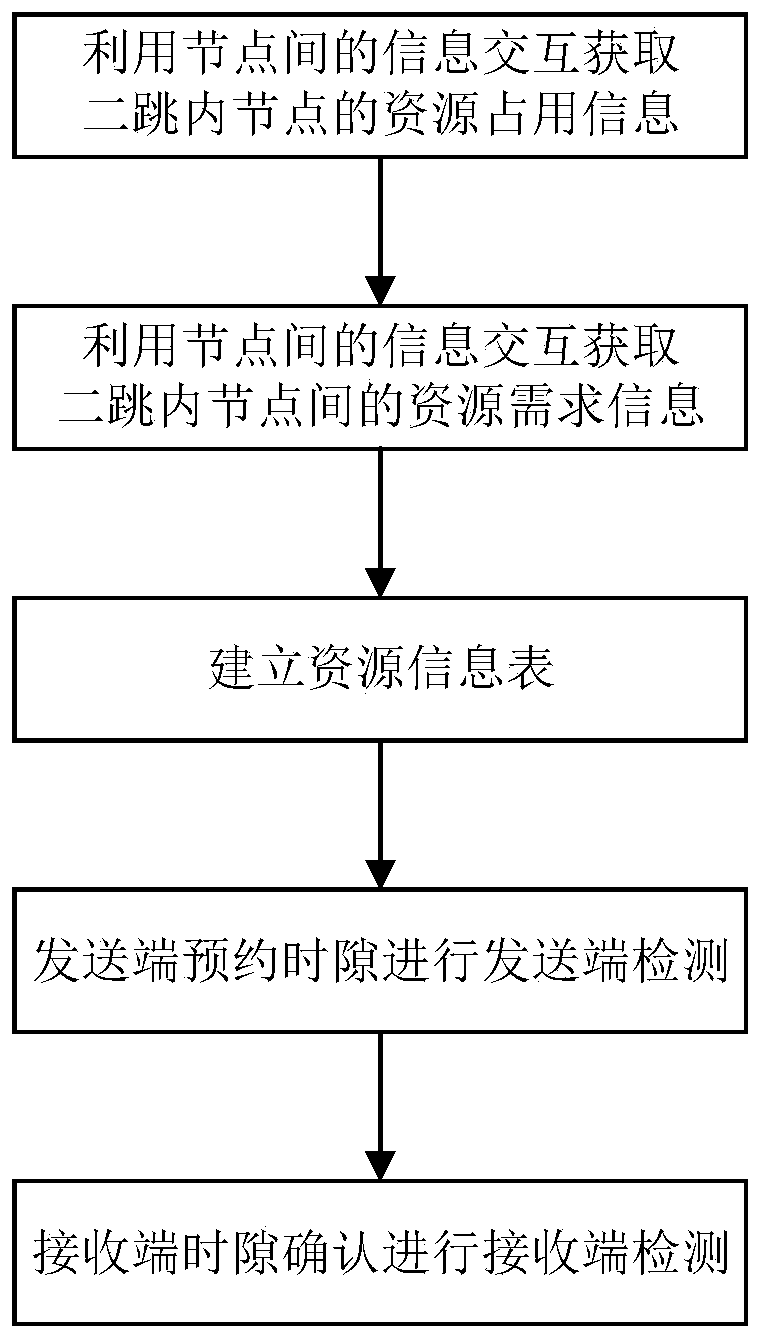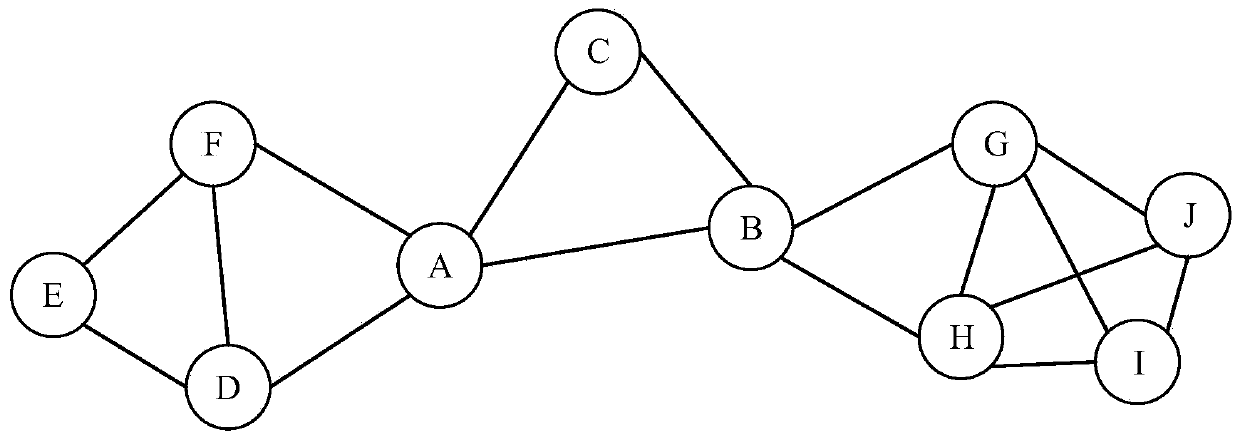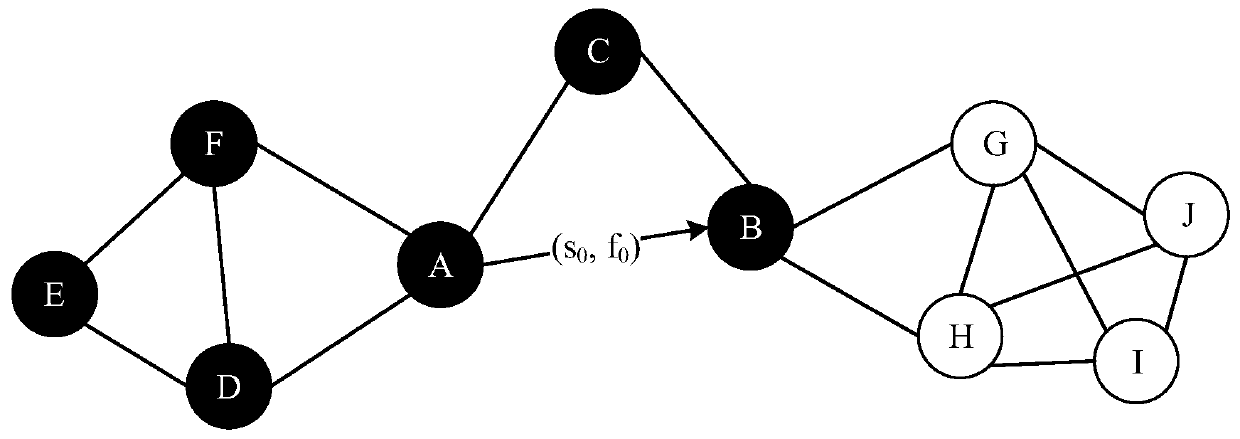Self-organizing network time-frequency resource scheduling method supporting resource fragment reduction
A technology of self-organizing network and resource fragmentation, which is applied in the field of time-frequency resource scheduling of self-organizing network and resource allocation of links between nodes in multi-channel self-organizing network. Cause impact, resources can not be used reasonably, etc., to achieve the effect of reducing resource fragments, improving channel reuse rate, and low overhead
- Summary
- Abstract
- Description
- Claims
- Application Information
AI Technical Summary
Problems solved by technology
Method used
Image
Examples
Embodiment Construction
[0044] Embodiments of the present invention will be further described in detail below in conjunction with the accompanying drawings.
[0045]In the prior art, the sending node does not perform the sending end detection in the present invention on the time-frequency resource block to be reserved, and the receiving node does not perform the receiving end detection before the time slot confirmation information returned by the receiving node, and due to the randomness of resource allocation, in the self When organizing network resource allocation, resource fragments will be generated, which will affect the full utilization of time-frequency resources and cause waste of resources. The resource fragmentation refers to the situation that during the allocation of USAP link resources, there will be idle time-frequency resources due to unreasonable resource allocation but cannot be allocated and used due to time slot conflicts. These idle and unavailable time-frequency resources are call...
PUM
 Login to View More
Login to View More Abstract
Description
Claims
Application Information
 Login to View More
Login to View More - R&D
- Intellectual Property
- Life Sciences
- Materials
- Tech Scout
- Unparalleled Data Quality
- Higher Quality Content
- 60% Fewer Hallucinations
Browse by: Latest US Patents, China's latest patents, Technical Efficacy Thesaurus, Application Domain, Technology Topic, Popular Technical Reports.
© 2025 PatSnap. All rights reserved.Legal|Privacy policy|Modern Slavery Act Transparency Statement|Sitemap|About US| Contact US: help@patsnap.com



